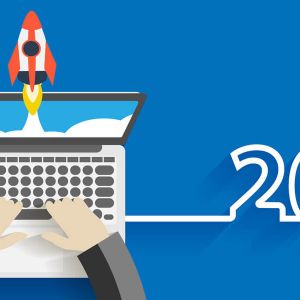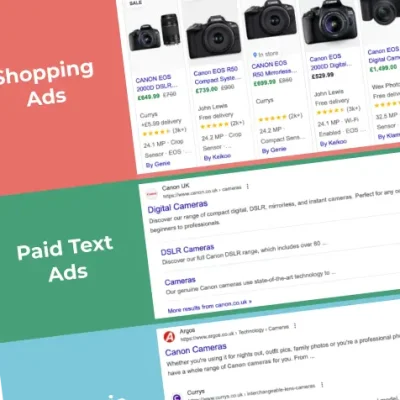Amongst so much uncertainty, the world of web development proves an exciting place to watch the future unravel and people adapt. We’ve picked out some of the best rising development trends for you to be aware of as you browse the internet this year – have you noticed them yet?
1. AI: Chatbots
Artificial Intelligence has long been enhancing our online user-experience, and chatbots are the next thing here to stay. You might have suspected before whether a person you were live messaging was, in fact, actually a robot: perhaps the giveaway was clunky, pre-prepared sounding responses. But smarter, less detectable chatbots are on the rise.
These ‘conversational agents’ are often used for live-chat customer support, but we are discovering that their benefits range far and wide. For example, UNICEF is using a chatbot called U-Report to help marginalised people in developing nations talk about the most urgent issues in their communities. They use the information they receive to fuel policy recommendations.
2. Voice Search
Hopefully you’re aware by now that most of your devices, if not all, have the ability to hear you. If not, then you better believe it! And that voice-search technology that you’re becoming familiar with – such as Apple’s Siri, or Amazon’s Alexa – is set to be the new go-to. With a likely increase in the number of people relying on voice search in 2021, voice-search optimization is now at the forefront of SEO and development strategies for websites.
3. Progressive Web Apps (PWAs)
Progressive web apps are essentially websites that feel and function like a mobile app. They have recently gained traction (used most notoriously by Twitter) due to the positive impact they have on user-experience: high-speed loading and downloading, offline use, and push notification sending. Essentially, PWAs are websites that encompass all the best things about a native phone app, but on your website browser.
4. Website Push Notifications
The growth of web-apps is paving the way for an increase in Website Push Notifications. They work in the same way as regular push notifications on your phone (the banner notifications from in-phone apps). By acting on the permission you give to a website to send you notifications, the push notifications can directly access your screen at any time to show new information. This can maintain higher conversion rates for businesses.
Read our article on website push notifications to find out more.
5. Accelerated Mobile Pages (AMPs)
The adoption of Accelerated Mobile Pages for websites is one of the fastest trending development strategies we will see this year. AMPs were originally initiated by Google to ensure desktop websites can offer the same user experience as mobile sites, the main goal being to increase the loading speed of websites for mobile browsing. This was particularly useful for grasping hold of the short window on offer to grab a reader’s attention online (The Guardian was one of the first to start using AMPs in 2016).
Structurally, the AMP is a (lightweight) HTML copy of a site’s web pages, which enables fast-loading and enhances site performance for smartphone users. AMP pages only take around 2 seconds to load, compared to at least 20 times that for non-AMP pages. You might notice that increasingly more sites are being built through integration of AMP technology (amp. instead of www.) to better the smartphone experience.
6. Single Page Applications (SPAs)
Single Page Applications are the key to that all-day systematic scrolling you can’t help but fall victim to. SPAs work inside a browser to offer seamless user-experience by dynamically loading as a single page. This way the user does not have to wait for the site to continually reload, and can enjoy uninterrupted scrolling. They can offer better page performance, data protection, and work efficiently if the user has poor internet connection, as the content loads completely at the first sign of communication with the server. You might recognise SPAs as used by sites such as Facebook and Uber.
7. Single Page Websites (SPWs)
Much like SPAs, a single-page website is a website without any additional pages. Content, such as that which might otherwise be found under a “Work” or “About” tab, is fully loaded on the initial page, and can be navigated by links within the one page.
These intuitive and well-structured single-page websites increase the likelihood of maintaining the attention of users, and enables control of the order in which information is absorbed. Also, compared to multi-page sites, the site design and development requires less time and money and is more suited to optimisation for mobile devices.
8. Smart Content Loading
How do the big sites like Netflix and Amazon hold your attention? I’d bet that personalised content has something to do with how they make you feel so at home. Well now smaller websites are picking up the same idea: personalising site content to suit the individual visitor and decrease bounce rates. So, instead of confronting every site visitor with the same homepage, you can show the most relevant content to the individual, based on data such as the user’s location or device, and increase the chance of turning potential customers into leads.
How’s your website looking in 2021? If you need advice or assistance, don’t hesitate to get in touch with us.



